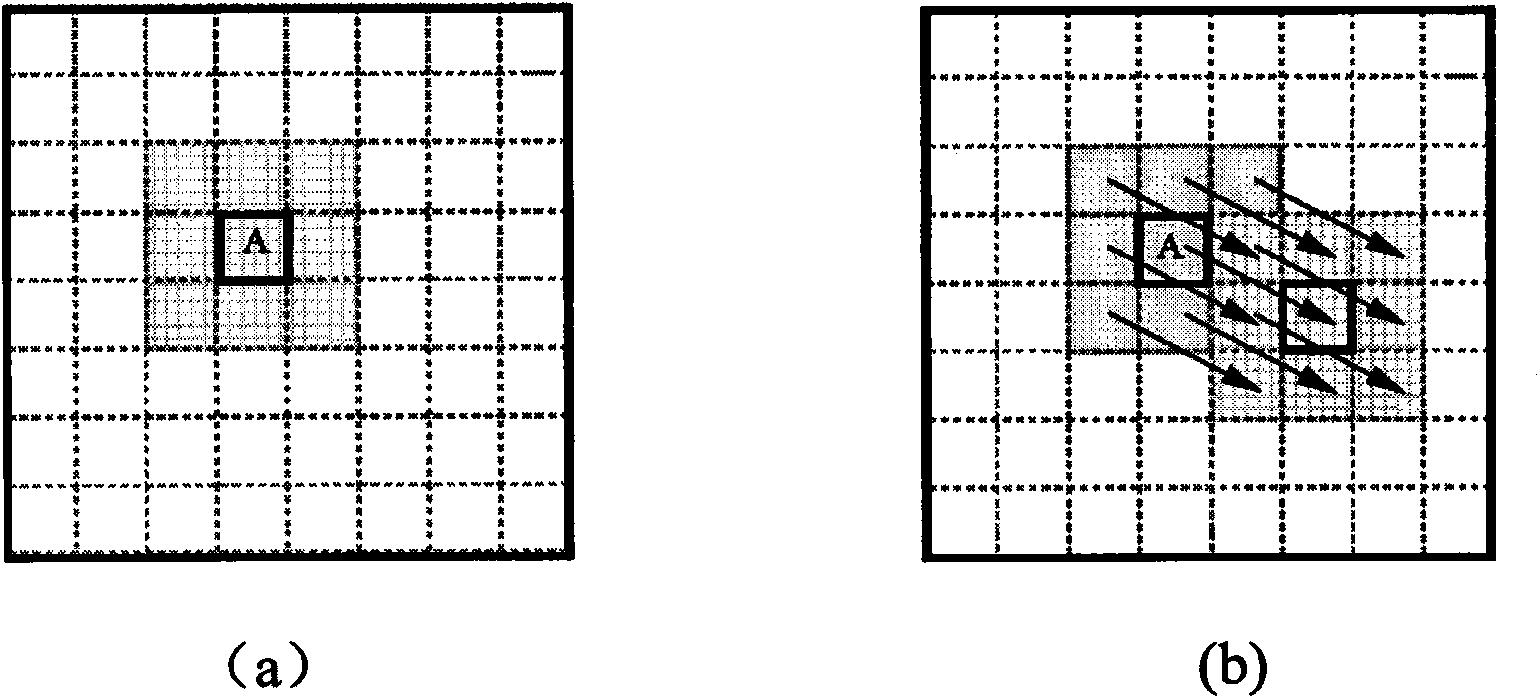Method for converting 2D video into 3D video in three-dimensional television system
A technology of three-dimensional TV and conversion method, which is applied in stereo systems, electrical components, image communication, etc., and can solve the problems of not using the spatial correlation of image points, mismatching pixel points, and time-consuming search process.
- Summary
- Abstract
- Description
- Claims
- Application Information
AI Technical Summary
Problems solved by technology
Method used
Image
Examples
Embodiment
[0086] (1) Download the Akko&Kayo_p00026 standard test code stream encoded by H.264 from the Internet. This video file is the 2D video file to be converted. Figure 4 It is a screenshot of Akko&Kayo_p00026 video.
[0087] (2) Decode the video file, extract the motion vector of each 4×4 pixel block from the H.264 video decoder, convert it into motion amplitude, and generate a description map. Figure 5 that is Figure 4 The description map corresponding to the video screenshot. (3) The description map is linearly enlarged by 16 times to obtain the initial depth map. Figure 6 that is Figure 4The initial depth map corresponding to the video screenshot.
[0088] (3) Iteratively perform edge correction filtering to obtain a dense depth map with clear and accurate object edges, and complete the expression of 3D video. Figure 7 that is Figure 4 The dense depth map after 1 iteration filtering corresponding to the video screenshot, Figure 8 that is Figure 4 The dense dept...
PUM
 Login to View More
Login to View More Abstract
Description
Claims
Application Information
 Login to View More
Login to View More - R&D
- Intellectual Property
- Life Sciences
- Materials
- Tech Scout
- Unparalleled Data Quality
- Higher Quality Content
- 60% Fewer Hallucinations
Browse by: Latest US Patents, China's latest patents, Technical Efficacy Thesaurus, Application Domain, Technology Topic, Popular Technical Reports.
© 2025 PatSnap. All rights reserved.Legal|Privacy policy|Modern Slavery Act Transparency Statement|Sitemap|About US| Contact US: help@patsnap.com



